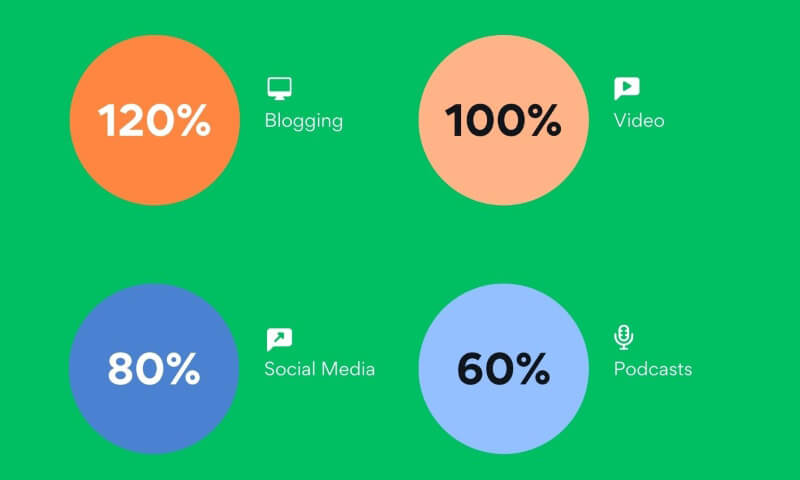Business Blogging ROI in 3 Steps: Keep It Simple

Measuring the ROI of your business blogging can be difficult at times because of all the factors that come into play.
By making regular blog post updates, you’ll get tons of benefits like higher search engine visibility, more inbound links, press mentions, and more!
The list can go on and on…
Yet, since you are doing business – it all eventually comes down to revenue.
This is what ROI stands for: Return on Investment… not Return on Influence or Return on Interaction or any other distraction.
What we really should do is focus on actions that potentially generate revenue, and sales…
There are three simple things to measure and to keep in mind:
1. Traffic
2. Leads
3. Sales
(mind, for some businesses – with a longer decision making process – the main value can lie in other actions, such as sign-ups for a free trial).
Why focus on these three?
Simple – they bring money to your business!
- Traffic – when blogging you get a boost in traffic. Usually a very high boost. If you were to buy website visitors from some other place – they’d cost you money. So, a way to approach ROI on business blogging is to estimate the value of the traffic you get.
- Leads – visitors landing on your blog often fill out a sign-up form and leave their contact details. As a business owner you can contact them later on – and over time convert them into sales. So, another way to measure business blogging ROI is to estimate the value of your leads.
- Sales – these are the actual sales and sign-ups your business gets. If a website doesn’t sell directly, you can measure how many leads convert into sales when you contact them later.
Now, let’s get to the numbers here
Let’s assume that one article costs you $50 (if you outsource blogging the calculations are easy). If you blog in-house, you use the salary of the employee doing it for you (say 3 hours per post at $30 an hour that’s $90) and add on overhead costs (like rent and hardware) and then divide by the number of posts that should come out, let’s say that comes to $10 per post for overheads.
Blogging five times a week would cost you $250 if outsourced and $500 if in-house. In the following calculations, I’m using the cost of outsourced blogging, as it is cheaper and more realistic.
1. Measure traffic
- Let’s assume 3000 people visit your blog on a weekly basis (a very realistic number after 6 months if you’d started from zero).
3000 *10 cents per click (approximate cost of traffic if bought from AdWords) = $300. To get estimates – a great tool is KeywordSpy
ROI = (300 – 250)/250 = 20%
2. Measure Leads
Out of 3000 people who visit the blog, 5% fill out the sign-up form. People fill out the form – similar to the from on QuickSprout – and get valuable materials in exchange for their contact details.
So, your blog generates 150 leads weekly.
3000 *0,05 = 150 leads.
Let’s say lead value is $5. We assume – this is how much a company can afford to pay for it.
150 * $5 = $750
Then – we have $750 in value.
Now, the last step – let’s calculate ROI given we have our costs and benefits.
ROI = (750 – 250)/250 = 200%
3. Measure sales and sign ups
- Out of 3000 weekly visits you get 15 sales weekly. Let’s assume that the sale value (the actual profit each sale generates) is $100. Let’s assume that – just like with Unbounce – your business generates sales via a sign up form.
15 *$100 = $1500
ROI = (1500 – 250)/250= 500%
So, here is ROI for business blogging:
- Blogging ROI for Traffic: 20%
- Blogging ROI for Leads: 200%
- Blogging ROI for Sales: 500%
There are lots of other valuable “consequences” of business blogging. Here is what you can accomplish with blogging:
- grow search positions for selected keywords
- get mentions and reposts
- build partnerships
- build relations and hire people
- grow thought leadership
- get free guest content
If you want to get even more specific in calculating the blogging ROI and include all those additional benefits into your analysis – the approach is still very easy.
You need to estimate the cost of the alternative actions.
For instance, SEO would cost you $500 per month, but with blogging you get leading positions in search engines anyway. So, you get $500 in value. There is a great study by Forrester that measured the ROI of blogging for corporate businesses.
Overall, measuring blogging ROI is simple and incredibly useful for your business.
Need professional help with blogging? What is your experience with blogging? How do you measure your success? What goals have you set?

Comments (0)